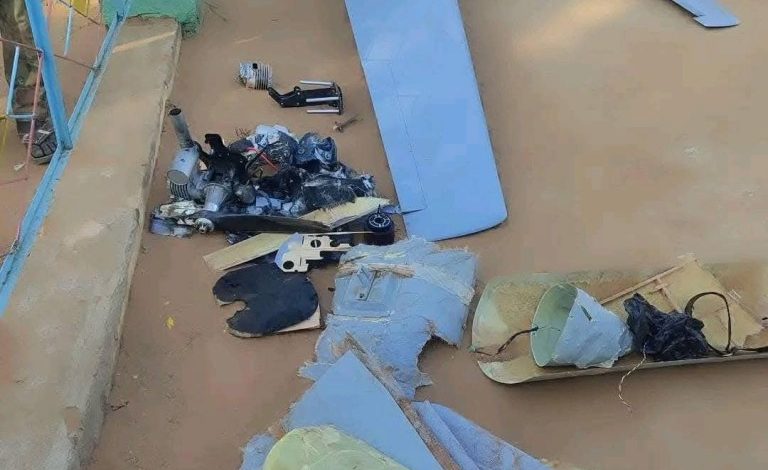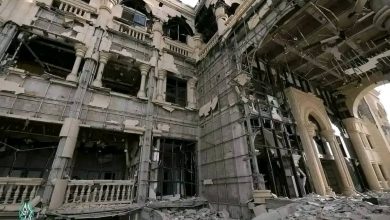Attempts to Destroy Merowe Dam… The Militia Reaps Ashes

Report by Rehab Abdullah
Since the outbreak of war between the Sudanese Armed Forces (SAF) and the Rapid Support Forces (RSF) militia in mid-April 2023, the rebel militia has focused on destroying infrastructure. According to unofficial estimates, the damage inflicted on public facilities and infrastructure since the war began has exceeded $150 billion.
Desperate Attempts at Destruction
The militia has repeatedly attempted to destroy vital infrastructure using explosive-laden drones. One of their primary targets has been the Merowe Dam. The 19th Infantry Division of the Sudanese Armed Forces in Merowe stated that as part of its systematic campaign against military sites, vital infrastructure, and national development projects, the RSF attempted to attack the Merowe Dam’s power supply using several drones.
Additionally, the militia targeted Atbara Airport and the Shuwak Power Station in Gedaref State. In total, they have attacked four major power stations that supply electricity to six Sudanese states, including Khartoum.
Merowe Dam and Its Significance
Merowe Dam is the largest dam in Sudan, with a storage capacity of 12 billion cubic meters of water. It generates approximately 1,250 megawatts of electricity, accounting for 40% of the country’s total consumption. It is also one of the largest hydroelectric projects in Africa.
The dam is situated on the main course of the Nile River, about 350 km north of Khartoum, near the Fourth Cataract, on Merowe Island, from which it derives its name. The dam structure spans 9.2 km in length and reaches a maximum height of 67 meters. It consists of multiple sections made of concrete and rockfill embankments on both riverbanks.
Strategic Importance
From a strategic perspective, Merowe Dam supports Khartoum’s civilian airport in emergency situations. It also hosts a military airbase that complements Sudan’s main military airport in the capital, providing air defense for northern, central, western, and eastern Sudan.
Furthermore, Merowe serves as an alternative base for Sudan’s air force and is home to two of the largest agricultural projects in the Northern State, established during British colonial rule. In addition, it houses Sudan’s largest hydroelectric dam, making it a critical asset.
Key Figures
Former Minister of Petroleum, Engineer Ishaq Adam Jamaa, highlighted the dam’s economic importance. Speaking to Al-Ahdath, he explained that Sudan’s total electricity production is around 4,000 MW, with 50% generated from hydroelectric sources and 50% from thermal power.
Merowe Dam alone produces 1,250 MW, accounting for 30% of Sudan’s total electricity supply and 60% of its hydroelectric output. He emphasized that the dam is a crucial backbone of the national power grid, especially since thermal power generation depends on fuel availability. Given Sudan’s current reliance on imported fuel—due to the refinery shutdown—Merowe Dam has become the country’s primary power source.
For comparison, other major hydropower plants in Sudan include:
Roseires Dam (280 MW)
Sennar Dam (15 MW)
Khashm el-Girba Dam (18 MW)
Jebel Aulia Dam (30 MW, currently non-operational)
Jamaa strongly condemned the RSF militia’s attacks on Sudan’s infrastructure, describing them as destructive and detrimental to national stability.
Significant Economic Role
Economic expert Dr. Mohammed Al-Nayer emphasized that Merowe Dam is a massive project, generating around 1,250 MW—nearly one-third of Sudan’s total electricity. He stressed the necessity of intensifying security measures to protect strategic projects, given that electricity is a fundamental driver of the production sector and public services.
Al-Nayer pointed out that nearly all public service institutions rely heavily on electricity, underscoring the need to fully secure these vital projects to safeguard Sudan’s economy. He added that the dam also facilitates irrigation, expands agricultural land, improves river navigation routes, and provides a water storage reservoir extending 176 km.
Extent of Damage to Merowe Dam
Minister of Energy and Petroleum, Dr. Mohieddin Naim, stated that the attack on Merowe Dam’s power station led to the burning of the Al-Merakhiyat transmission reactor. However, emergency repairs were swiftly carried out.
He confirmed that the dam’s power generation units, turbines, transformers, and auxiliary equipment remained intact. The attack temporarily shut down the station, but one unit was restarted to supply power to Northern State before being briefly taken offline again and subsequently restored.
The minister emphasized the importance of implementing further security measures to protect Sudan’s essential infrastructure.
No Lasting Impact
Dr. Mustafa Hussein from the Ministry of Irrigation and Water Resources downplayed the attack’s impact on the Merowe Dam’s power station. He clarified that the targeted facility was a transmission substation, located outside the dam’s main power plant, and had no effect on dam operations.
International Protocols
Legal experts highlighted that international law mandates precautionary measures in modern armed conflicts. According to Article 57 of the international protocol, targeting civilians or civilian infrastructure, including public utilities and national facilities, is strictly prohibited.



